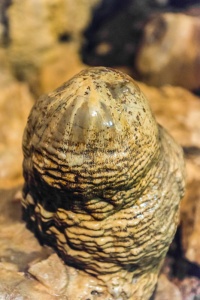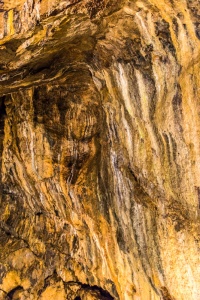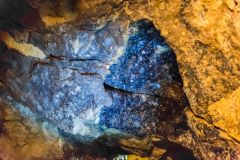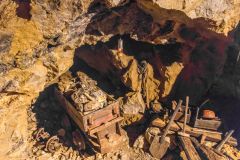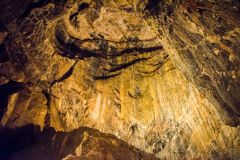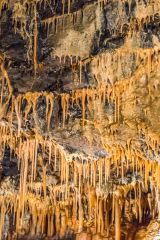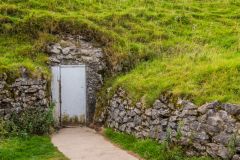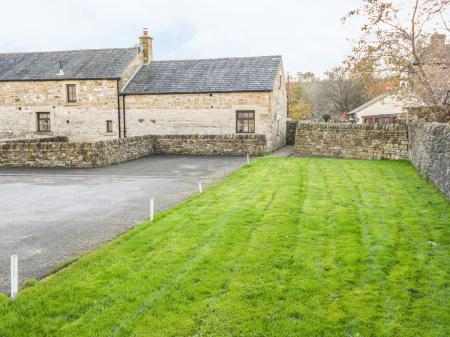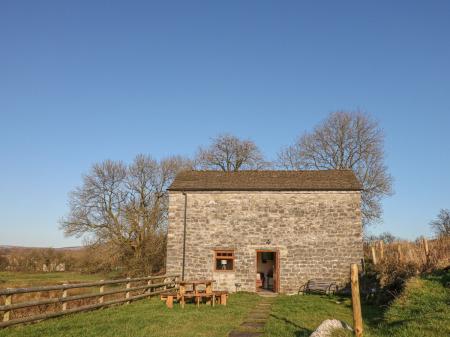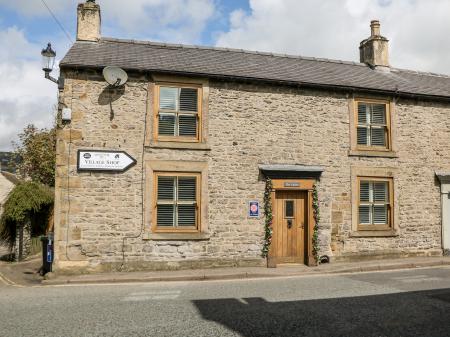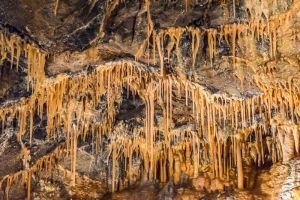
Castleton is the only place in the world where Blue John Stone can be found. Treak Cliff is one mine site, while nearby Blue John Cavern is the other. There are several guided tours each day, and the tours last about 45 minutes.
Tours take in the Old Series of caverns, found by lead miners from around 1750, and this is where the Blue John deposits are found. Another part of the caverns is the New Series, found during blasting work in the 1920s. The New Series does not contain Blue John Stone but boasts fabulous chambers with striking flowstone and fantastic shapes of stalagmites, stalactites, and helictites (twisted stalactites).
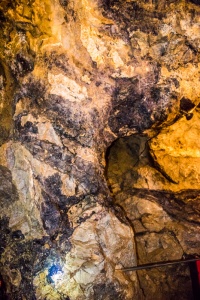
Tours showcase underground caverns boasting stalagmites and stalactites, as well as a variety of mineral deposits and fossils. Tour guides show how 18th-century miners built a tunnel using only hand tools as they followed veins of the rare coloured fluorspar deep into the earth. One of the highlights of a tour is 'The Pillar', the largest piece of Blue John Stone ever discovered. The Pillar contains roughly 16 tonnes of the precious stone.
The Pillar is found in one of the main chambers, called The Witch's Cave, named for a rock formation which, using some imagination, looks like a witch's profile. The chamber leads deeper underground to Aladdin's Cave, where richly coloured flowstone lines the cavern wall. In Alladin's Cave are a striking series of stalagmites, nicknamed The Seven Dwarves. One of the 'dwarves' is dubbed 'Happy', and miners (and modern visitors) often rub the head of the stalagmite for luck.
Other cavern chambers show fantastic formations of stalactites (from the cavern ceiling) and stalagmites (growing up from the cavern floor). One of the most famous rock formations is called The Stork, for it resembles a bird on one leg!
Parts of the caves not open to visitors are still mined for Blue John, which is used to make many of the objects on sale in the cavern gift shop. Some of the stone comes from the Lost Vein, a rich deposit that lay unknown for 68years after the previous miner died before he could share the secret of its location.
What's in a Name?
The name Blue John seems to have evolved from the French words 'bleu et jaune' meaning 'blue and yellow'; a reference to the unique colour banding of this type of fluorspar. The local miners came up with the name in the 18th century, and it stuck.
Visiting
The cavern entrance is located well up the hillside from the minor road heading northwest from Castleton. You have to climb up a series of stone steps to the entrance, then wait for one of the regular tours. The good part of having to climb up the steep hillside to the entrance is that the views across Castleton and the Hope Valley are simply superb!
Our tour lasted about 40 minutes and was absolutely fascinating. The first section of the tunnels has a low ceiling, and though I'm only about 5'9" I had to duck quite a bit to avoid hitting my head. Thankfully the ceiling is quite a bit higher the rest of the way!
The guide was extremely good, and pointed out veins of blue john as we passed, and showed how the ore was mined. The really interesting feature of the tour is the peculiar rock formations, particularly the flow stone and stalactites in the Witch's Cave and Alladin's Cave. The formations are almost surreal, like rock frozen in the act of flowing. And, of course, we rubbed the stalagmite known as Happy for luck!
